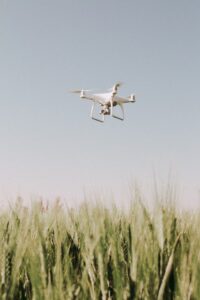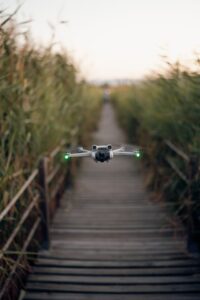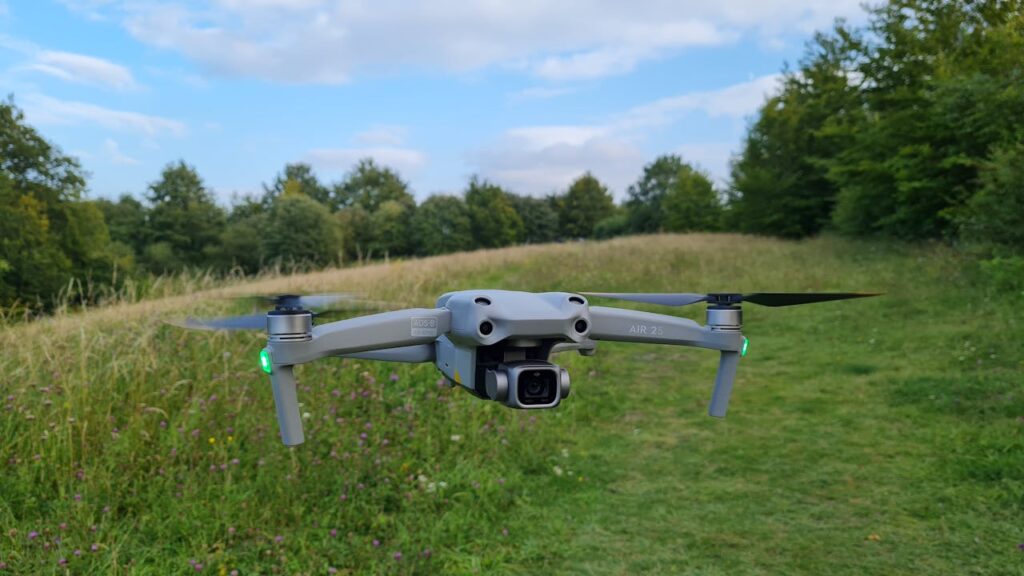Agricultural businesses need efficient, productive, and profitable business plans. They face risks from supply chain and shipping, crop diseases and infestations, and inclement weather conditions such as droughts and flooding.
Farmers, ranchers, and other business owners in the industry need to turn to technology to help mitigate these risks and reduce their impact on business.
Drones in agriculture have become one of the most powerful tools for many reasons. Below are the top five reasons to use drones in the agriculture industry:
-
- Land Imaging
One primary use of drones in agriculture is creating highly detailed maps and images of fields and land.
These detailed images give farmers a three-dimensional view of their crops or land, including elevation changes, damage from mother nature, and demarcated boundaries.
When used with other programs, these images are invaluable for helping farmers study their growing conditions and take necessary steps to remedy situations as they arise.
2. Crop Monitoring
 Using an analysis of the crop images, farmers can identify plants that need extra help and use agricultural drones to apply fertilizer in specific quantities and locations.
Using an analysis of the crop images, farmers can identify plants that need extra help and use agricultural drones to apply fertilizer in specific quantities and locations.
As most farmers know, fertilizers are a prolific expense, and wasting them on plants that do not need them is unnecessary.
Precise fertilizer application using drones is an effective way for farmers to reduce their input costs without compromising the health of their crops.
3. Data Analysis
 Data analysis is a vital aspect of agriculture.
Data analysis is a vital aspect of agriculture.
You can only fix what you know needs fixing.
One reason drones and farming work so well together is that drones allow farmers to analyse their own land.
Before drone technology, farmers had to rely on satellite imagery for aerial views, and it could take weeks before the images were available to view.
With drones, large plots and crops can be scanned in a single flight, saving time and offering high-resolution images. This will help farmers perform quick data analyses and understand crop growth and health.
Better data analysis leads to farmers making more informed decisions, which is better for business.
4. Soil Surveys
Aerial photography has been used in the agricultural industry for years.
Aerial photography is helpful for farmers for a few reasons, but the main ones are soil mapping and detailed soil surveys at various testing stations.
Drones gather data that is then used to create detailed mapping, such as soil mapping. Soil mapping is essential for growing demanding and technical crops such as citrus fruits, tea, and tobacco.
Agricultural drones can be used in all areas, but are particularly useful in areas with a complex soil cover.
5. Real-Time Crop Protection
Agricultural drones effectively provide real-time crop protection by identifying threats such as theft and fire.
Drones are beneficial for this purpose because they capture high-quality imagery quickly. That data helps farmers and agricultural business owners track any field changes and mitigate challenges as they arise.
Stationary cameras can provide less detail than drones, but these automated crop guards can cover more fields because of their speed.
These five reasons will accurately assess why drones are crucial in the agricultural industry.
The main takeaway is that agricultural drones allow farmers to improve production and reduce costs—a winning combination for any producer.










I love drones but I always crash them. I need a good GPS one.
I would advise to get fully trained up before getting a drone. Get a simulator it will help you.
Drones are great but be prepared for a sharp learning curve if you get a high end one.
We are thinking of getting drones for our farm in Portugal but not sure which ones to get. Are they hard to maintain?
If you are getting drones make sure you buy lots of batteries and a decent charger.
Is it better to use drones or CCTV to monitor your land?
I need drones for livestock movement and counting. Is this a viable option? We have a sheep farm in Australia.
This is real useful thanks Definitely use more tech like this on our farm